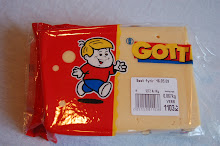On Friday, February 29th, a cohort and myself traversed the asphalt paved paths to an incredible opportunity at UPenn. In conjunction with the exhibition “Power Fields: Explorations in the work of Vito Acconci” at the Slought Foundation, Mr. Acconci spoke that night to a sea of people dressed in mourning at UPenn. Aptly named, his talk “From Word to Action to Architecture” cycled his career, aesthetic explorations, and the progression of chosen medium. He started out using words as a material with an agenda to make them as literal as possible. One of which I really enjoyed was, for example:
“On the one hand there is a finger.
On the one hand there is another finger.
On the one hand there is another finger.
On the one hand there is another finger.
On the one hand there is another finger.”
From there he started to incorporate words with action. He would read as he was walking so as to translate spoken word into time and distance. One of the great things about his early work is that it is a non-traditional artist’s medium, like paint or clay. Which coincides with the great facet of art, which is that (what he explained it as) it is a “non-field field” in which one can “import from any field”. As he progressed along the timeline he spoke about his Following Piece in which he was interested in a real space and how he would move through it. This ultimately was by way of a randomly chosen pedestrian. He talked about how his movements than became the emulation of another’s, and how he became tied into someone else’s time and space, literally being dragged along. He was extremely fascinated in the role of the viewers and the attempt to actively engage them. So he began making works in which he made himself vulnerable (there include most of his video pieces such as converging). He expressed his theory in which he felt this would open up the circular exchange of the artist and action in turn extending it to the viewer. Yet in retrospect he said that in these explorations “I started an action that ended in me”. This closed the circle, creating the voyeuristic viewer. Which is where his work then shifted to live performance. This includes works such as Claim, and the infamous Seed Bed. In which the former turned out to perpetuate the hierarchical role of artist and viewer and in which in the latter though trying to become part of the space he questioned whether his presence was superfluous. After this he became extremely interested in installation and art that only made sense in a particular space, which soon changed into an attempt to redo architecture and became involved with various public art projects. This was the shift from where he stopped working alone and instead in a group (Acconci Studios). “If you start private it will end private, and if you start quasi public it will end publically. “ One project in which he was involved with was to redesign the WTC. This was a “pre-exploded WTC so that if terrorists were flying by they would look down and see that this one was already taken care of and that they would just pass it by”.
The best part was when you headed over to the gallery, which had all his documented work, videos, and architectural design. This space was literally a labyrinth in which gallery goers were forced to interact with one another. The main room house this enormous amorphously shaped table that came up to your shin, in which viewers could sit on the pepto bismol pink table/bench and peruse through copies of his textual works. This was AWESOME because during the talk he had spoke various times on how it was important for him to try to re create the gallery space as one in which people could gather.


No comments:
Post a Comment